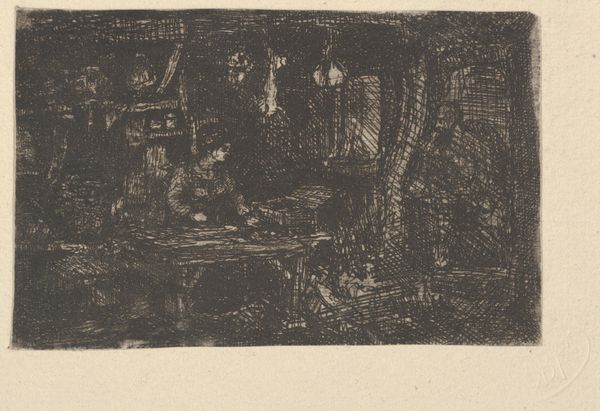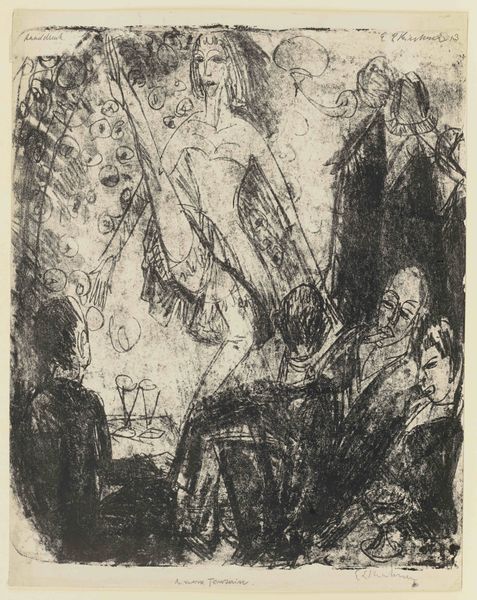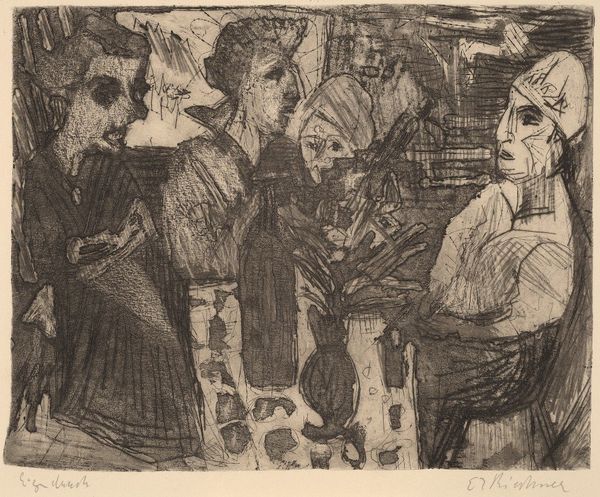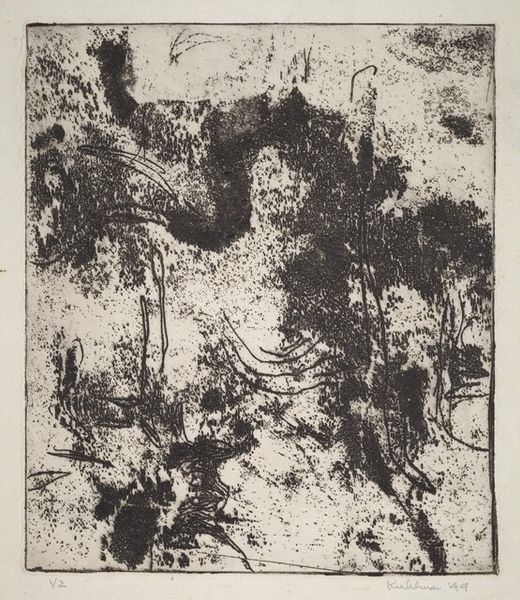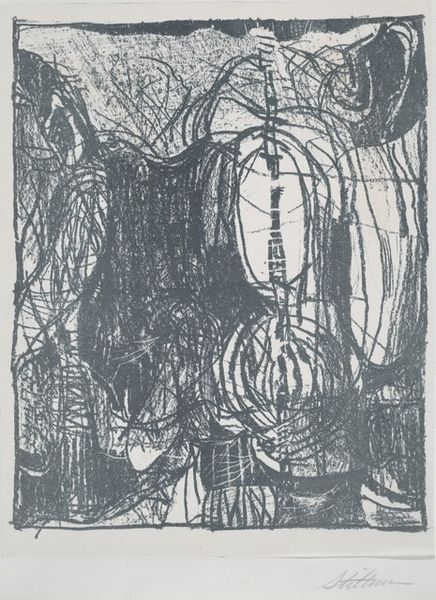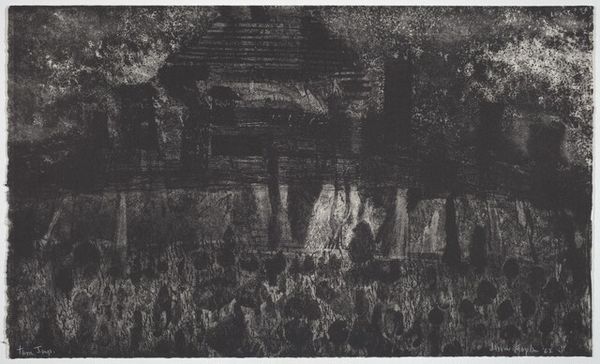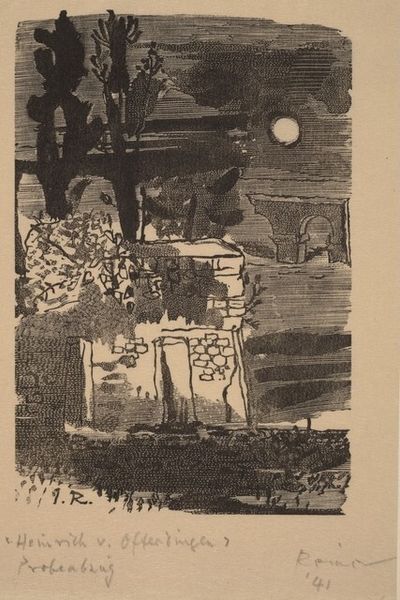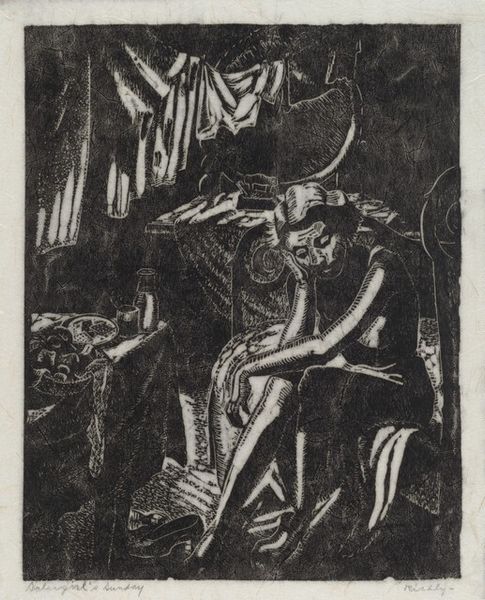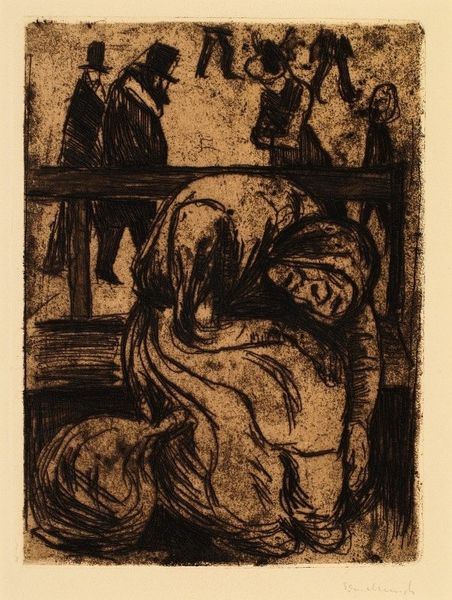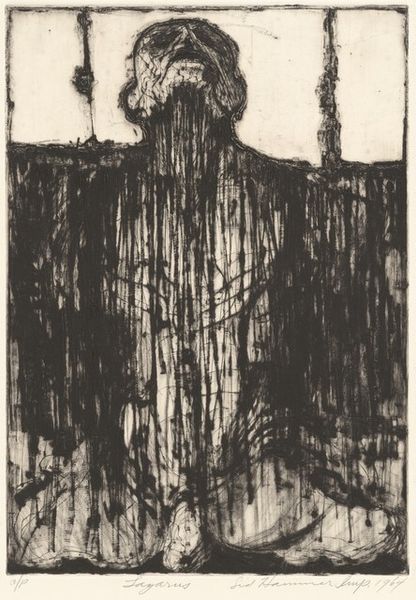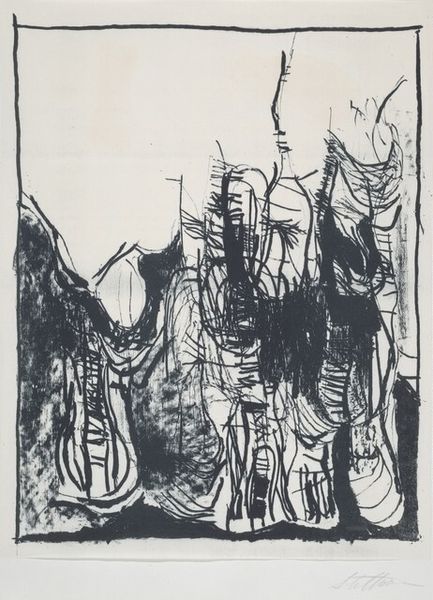
print, etching
# print
#
etching
#
figuration
#
abstraction
#
monochrome
Copyright: National Gallery of Art: CC0 1.0
Curator: This is "Trumpets", a 1961 etching by Sid Hammer. The printmaking process renders an interesting composition, wouldn’t you agree? Editor: Yes, immediately, the somber and anxious mood jumps out at me. The rough, scratchy lines create a stark, almost apocalyptic atmosphere. What’s the story here? Curator: The means of production were undoubtedly laborious. The artist scratched lines into a metal plate, painstakingly layering to create these contrasting values of light and dark. It seems to highlight a real contrast. Look at the flat plain in contrast to the crowded lower portion. Editor: I see that contrast. And for me it’s as if two distinct social realities are presented. There's a mass of people, maybe refugees, clustered together under what appear to be ominous shapes looming above, maybe housing or just an oppressive sky. Curator: You're right, it’s quite heavy in the application of ink, isn’t it? Notice how the forms of the people are rendered. They seem pressed together, their individual identities somewhat blurred, almost consumed. A direct comment perhaps on their socio-economic situation. Editor: Exactly! Their collective vulnerability becomes a central theme. Are they seeking shelter? Or perhaps expressing some collective grief or anger? I am also thinking about how, post-World War Two, there was great displacement in many regions and also the rise of the fear of nuclear warfare, both being heavy socio-political anxieties. Curator: It’s interesting to see the abstraction, alongside figuration too. Hammer employed printmaking in the middle of the 20th century; his use of technique surely meant he was considering mass production. Print lends itself to the dispersal of ideas, just as much as images. Editor: That's a strong point. And it makes me consider the power dynamics inherent in image distribution during this era. Whose voices were amplified, and whose were marginalized? And this print could be a subtle commentary on those structures. Curator: This has made me consider the labour of producing art, against the possible socio-political contexts informing such an atmosphere, captured so effectively in lines of dark ink. Editor: I'll leave feeling concerned for humanity in times of displacement, and considering those artists reflecting society at various points in history, like this.
Comments
No comments
Be the first to comment and join the conversation on the ultimate creative platform.
